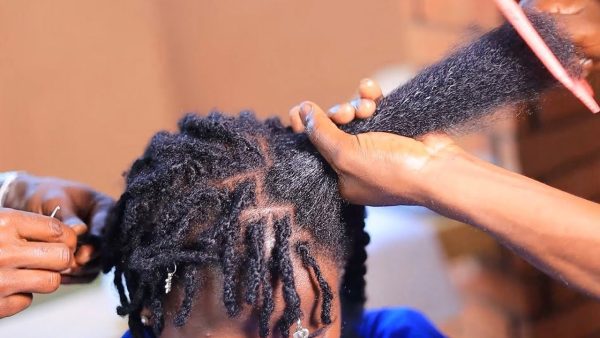
Your decision to transition out of your dreadlocks signifies that you have taken the leap of faith. The process of removing dreadlocks can leave your hair feeling a little bit…well, tricky. Although this is a liberating experience, your hair after removing dreadlocks can be brought back to life, stronger, and more attractive than it has ever been with just a little bit of attention and care.
Hair After Removing Dreadlocks
Everyone’s hair is different. The time it takes for your hair to recover will depend on the condition of your hair before locking, your removal method, and your hair care routine. There are things to expect after taking out your dreadlocks.
Breakage
This is common, especially with mature or bleached dreadlocks. It is possible that some of the hair was broken during the process of locking it, and that it was concealed within the dreads.
Tangled Mess
Depending on the procedure that was used to remove your hair, your hair may be highly tangled. You are going to find that patience and a detangling spray are your best friends.
New Hair Growth
You will probably notice a segment of healthy new growth at the roots that was not locked together.
Unevenness
The new growth and the hair that was locked will probably have a distinct difference in terms of both their texture and their overall health. With the right kind of care, this will become more even over time.
Rediscovering Your Texture
After being locked for some time, you will have the opportunity to once again recognize and appreciate the texture of your natural hair.
Freeing Your Hair
Put an end to the restrictions that dreadlock styles impose on you! It is now possible for you to experiment with different hairstyles and express yourself via your hair.
Tips for Healthy Hair Recovery
Removing dreadlocks can leave your hair in a vulnerable state. Don’t worry, though! With the right approach, you can promote healthy hair recovery and rediscover your natural texture. Here are some key tips to get you started.
Deep Conditioning
Post-dreadlock dryness can be addressed by deep conditioning hair with a rich, hydrating mask containing ingredients like shea butter, coconut oil, or avocado oil. Apply the mask to damp hair, cover it with a plastic cap, and let it sit for 20-30 minutes before rinsing thoroughly.
Strengthen with Protein
Dreadlocks can weaken hair strands, so protein treatments can enhance strength and elasticity. Use protein-based conditioner or mask once or twice a month, but be cautious not to overdose on protein.
Detangling
Patience is crucial when detangling post-dreadlock hair. Use a wide-tooth comb and detangling spray or conditioner to loosen knots, starting at ends and working up to roots, avoiding pulling or tugging. Consider finger detangling for maximum control.
Additionally, Braids, twists, Bantu knots, and headwraps can help minimize tangles and protect hair during recovery. Also, regular trims are essential to remove split ends and promote healthy hair growth. While washing, use a clarifying shampoo once a month to remove product build-up, and use a silk or satin pillowcase to reduce friction and breakage while sleeping.
Frequently Asked Questions and Answers on Hair After Removing Dreadlocks
1. What should I expect after removing dreadlocks?
Expect dryness, brittleness, and breakage, especially with mature or bleached dreads. You may notice a texture contrast between new growth and older hair, as well as tangling and a shorter appearance.
2. How can I promote healthy hair recovery?
Deep condition regularly, use protein treatments to strengthen strands, detangle gently with a wide-tooth comb, and consider protective styles. Regular trims are essential to remove split ends.
3. How long will it take for my hair to recover?
Recovery time varies for everyone and depends on your hair’s condition, removal method, and hair care routine. Be patient and consistent!
4. Is it okay to use heat-styling tools after removing dreadlocks?
Minimize heat styling as much as possible, as your hair will be more vulnerable. If you must use heat, apply a heat protectant spray beforehand and use low to medium heat settings.
5. Can I dye my hair after removing my dreadlocks?
It’s best to wait a while before coloring your hair, especially if it’s already damaged. Consult a hairstylist to assess your hair’s health and recommend the best approach.
6. My hair seems thinner after removing dreadlocks. Is this normal?
Yes, some hair loss is common during the removal process. However, your hair should grow back with proper care.
7. What are some good hairstyles to protect my hair after removal?
Braids, twists, bantu knots, or headwraps can all help minimize tangles and breakage while your hair recovers.
8. Are there any special products I should use?
Look for products formulated for dry, damaged hair. Consider using a clarifying shampoo once a month to remove product build-up.
Conclusion
Everyone’s hair is unique in its way. How long it takes for your hair to recover from locking will be determined by the condition of your hair before you lock it, the method you use to remove it, and the routine you follow to care for your hair. Maintain a patient and steady approach, and most importantly, enjoy the freedom that comes with your new hairstyle!

Leave a Reply